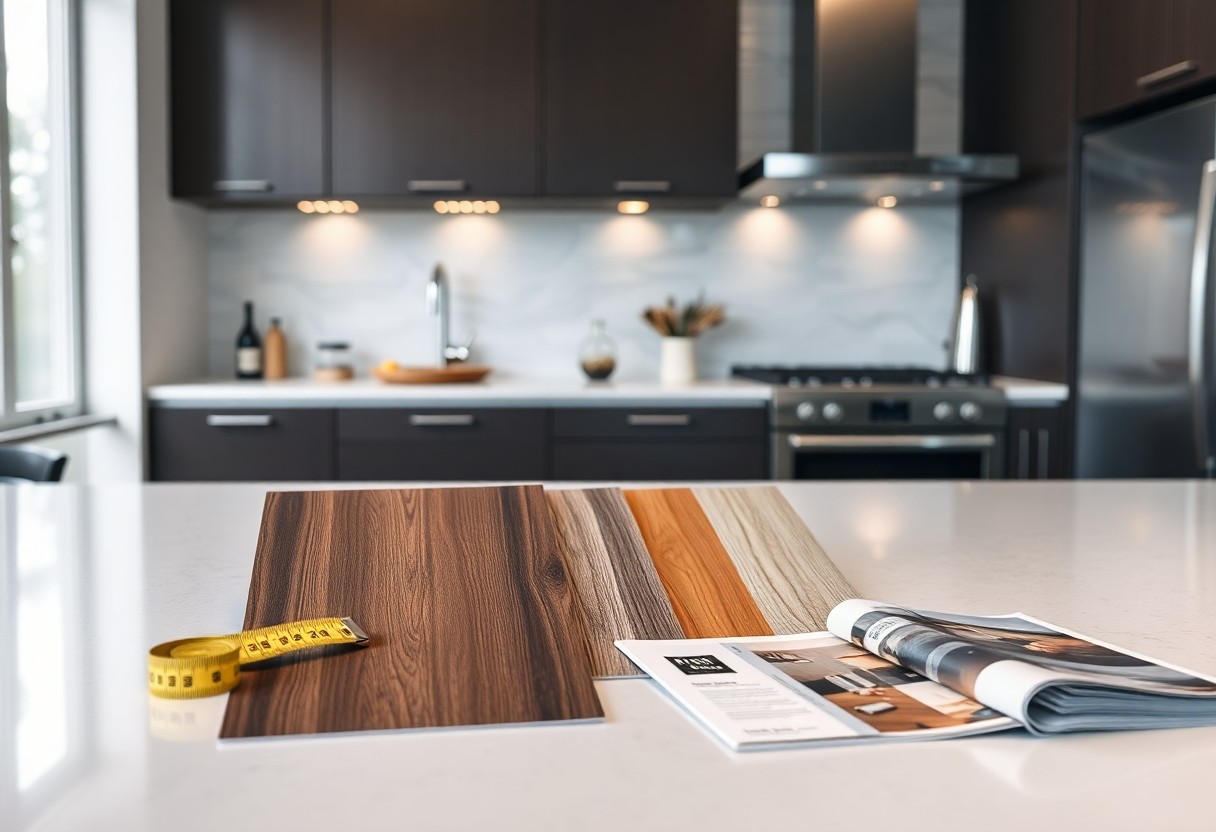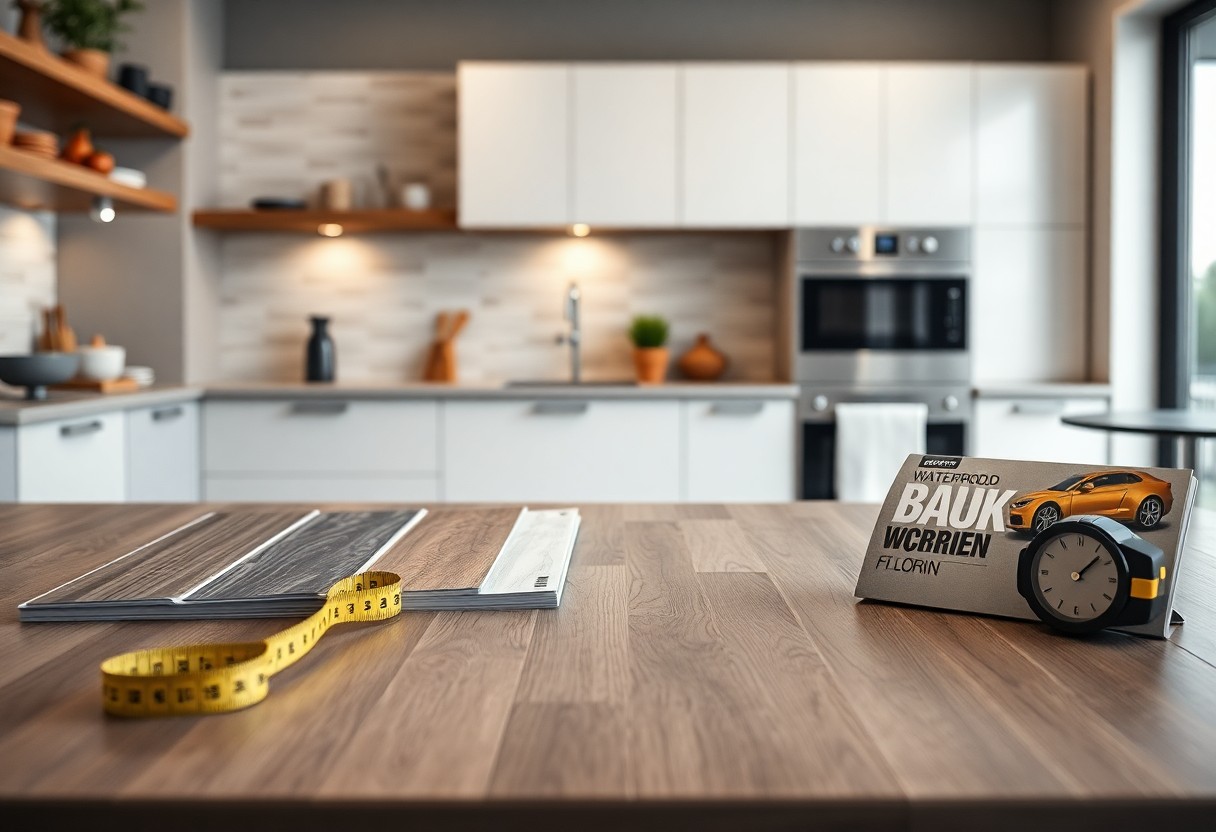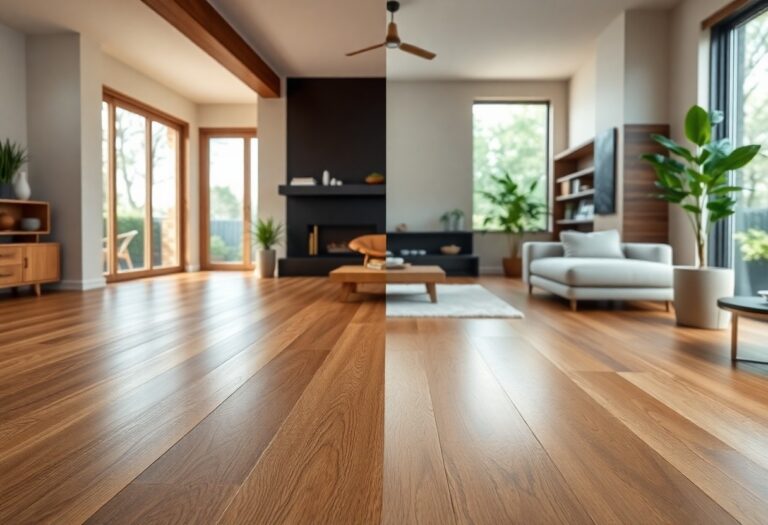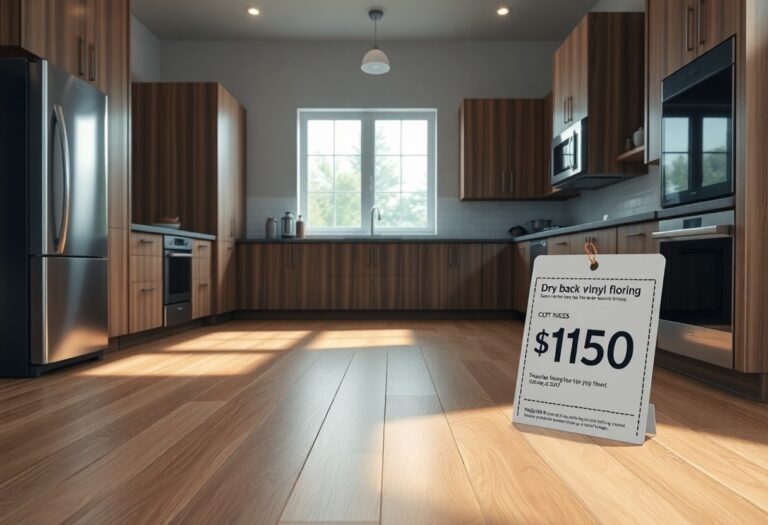Just imagine transforming your Kitchener home with the perfect waterproof laminate flooring, tailored to withstand the challenges of daily life. This guide will equip you with imperative insights and practical tips to make an informed choice that complements your style while ensuring durability. You will learn about important features, design options, and installation considerations, helping you create a beautiful, functional space that you and your family can enjoy for years to come.
Types of Waterproof Laminate Flooring
When opting for waterproof laminate flooring, you’ll find several types to choose from, each with unique features and benefits. Understanding these differences can help you make the best decision for your Kitchener home.
- Standard Waterproof Laminate
- Water-resistant Laminate
- Moisture Barrier Laminate
- Hybrid Laminate
- Engineered Waterproof Laminate
| Type | Description |
|---|---|
| Standard Waterproof Laminate | Offers basic waterproofing for everyday spills. |
| Water-resistant Laminate | Provides enhanced resistance to moisture. |
| Moisture Barrier Laminate | Includes an integrated moisture barrier for added protection. |
| Hybrid Laminate | Combines features of laminate and vinyl for superior performance. |
| Engineered Waterproof Laminate | Constructed with advanced materials for ultimate durability. |
Perceiving the differences among these types will guide you in selecting the best flooring for your lifestyle and moisture conditions.
Types of Materials
The materials used in waterproof laminate flooring play a significant role in its performance and durability. Various options cater to diverse preferences and requirements, ensuring you can find an ideal fit for your home.
- High-density Fiberboard (HDF)
- High-performance Melamine
- Vinyl-infused Laminate
- Synthetic Materials
- Natural Wood Polymer Composites
| Material | Description |
|---|---|
| High-density Fiberboard (HDF) | Provides strength and moisture resistance. |
| High-performance Melamine | Enhances durability and aesthetic appeal. |
| Vinyl-infused Laminate | Offers exceptional water resistance and style. |
| Synthetic Materials | Economical option with various designs. |
| Natural Wood Polymer Composites | Combines natural and synthetic materials for resilience. |
Any choice of material can significantly impact the longevity and functionality of your flooring, ensuring you invest wisely in your home.
Different Styles and Designs
Waterproof laminate flooring is available in an array of styles and designs, allowing you to personalize your space. From classic hardwood looks to modern stone patterns, the options cater to various aesthetics and functional needs.
With genre-defining styles such as rustic, contemporary, or traditional, you can easily match your flooring to your home’s décor. Color variations range from deep, rich tones to lighter hues, providing versatility in design. Textured finishes enhance the visual appeal, such as handscraped or wire-brushed, adding depth and realism. This extensive range ensures that your flooring not only meets practical demands but also elevates the overall look and feel of your Kitchener home.
Important Factors to Consider
When identifying waterproof laminate flooring, several key factors influence your decision. Consider these aspects to make the right choice:
- Durability
- Moisture resistance
- Style and aesthetics
- Installation process
- Maintenance requirements
Thou must weigh these elements to find the perfect match for your home.
Durability and Resistance
Durability and resistance are paramount in selecting your laminate flooring. Look for products with high AC ratings, which indicate their ability to withstand wear and tear. An AC3 rating is suitable for residential spaces, while AC4-5 is ideal for high-traffic areas. Ensuring your laminate can withstand scratches, dents, and fading will keep it looking fresh for years.
Moisture Levels in Your Home
Assessing the moisture levels in your home is crucial for choosing the right waterproof laminate. Areas like kitchens, bathrooms, and basements often experience higher humidity, making moisture-resistant materials necessary. Take time to evaluate the existing humidity, especially in spaces prone to spills or condensation.
To further understand moisture levels, utilize a hygrometer to measure indoor humidity. Ideally, you want to maintain levels between 30-50%. If your home often exceeds this range, consider adding dehumidifiers or ventilation systems. This proactive approach not only protects your laminate flooring but also enhances the overall air quality in your home.
Pros and Cons of Waterproof Laminate Flooring
Pros and Cons Summary
| Pros | Cons |
|---|---|
| Highly resistant to moisture damage | Can be prone to scratches and dents |
| Available in a variety of styles | Limited repair options if damaged |
| Cost-effective compared to hardwood | May feel less authentic than real wood |
| Easy to install and maintain | Sound insulation may be inferior |
| Suitable for high-traffic areas | Temperature sensitivity can cause expansion |
| Stable in various climates | Some options may emit VOCs |
| Compatible with underfloor heating | Not all products are truly waterproof |
| Offers good resale value | Surface may fade over time in sunlight |
Advantages
Waterproof laminate flooring provides numerous advantages for homeowners. Its resistance to moisture makes it an ideal choice for areas prone to spills, like kitchens or bathrooms. The variety of design options allows you to mimic the appearance of natural materials without the maintenance. Additionally, the installation process is user-friendly, meaning you can often complete it as a DIY project. With its affordability compared to hardwood and decent durability, you can enjoy both style and functionality in your space.
Disadvantages
While waterproof laminate flooring has its merits, there are also notable disadvantages. It can be susceptible to scratches and dents, especially in high-traffic areas. Once damaged, repairing laminate isn’t as straightforward as with natural wood; often, you’ll need to replace the entire plank. Additionally, while many products boast waterproof capabilities, not all are created equal, so it’s crucial to choose reputable brands. Temperature changes may also lead to expansion or contraction, potentially compromising the floor’s integrity.
Additionally, the sound insulation properties of laminate can be inferior when compared to other flooring types, which could result in a noisier environment. Some lower-quality options may emit volatile organic compounds (VOCs) that can affect indoor air quality. Moreover, while the aesthetic appeal is considerable, the feel of laminate underfoot can be less convincing than genuine hardwood. Be sure to weigh these aspects against the advantages to determine if this flooring fits your lifestyle and preferences.

Step-by-Step Guide to Choosing the Right Flooring
| Step | Description |
| 1. Assess Your Space | Evaluate the area to determine size, layout, and intended use. |
| 2. Budgeting for Your Purchase | Establish a budget to guide your choices effectively. |
| 3. Research Options | Explore different styles, colors, and durability features. |
Assessing Your Space
Start by measuring the dimensions of your kitchen to understand how much flooring material you’ll need. Consider the layout and any architectural features that might impact installation, such as cabinetry or islands. Pay attention to the existing lighting, as this can influence the color and style of laminate that will best suit your environment.
Budgeting for Your Purchase
Set a realistic budget for your laminate flooring project. Include costs not only for the material but also for underlayment, installation (if hiring professionals), and potential removal of existing flooring. Aim for a balance between quality and affordability—investing in a reputable brand may save you from future expenses.
Determine the total square footage required, and factor in about 10% extra for waste and cuts. High-quality waterproof laminate typically ranges from $2 to $5 per square foot, while specialized options can be higher. This range allows you to make informed decisions based on your financial parameters, ensuring long-term satisfaction and value in your choice.
Tips for Installation and Maintenance
Proper installation and maintenance of waterproof laminate flooring are imperative to maximize its lifespan and aesthetic appeal. Follow best practices to achieve optimal results and ensure longevity.
- Acclimate the planks before installation.
- Use a quality underlayment for sound absorption.
- Maintain a consistent temperature between 60-80°F during installation.
- Employ the floating floor installation method for better expansion.
- Regularly inspect for damage or wear.
This will help in preserving the integrity of your flooring.
Installation Best Practices
To achieve the best results when installing waterproof laminate flooring, start by acclimating the planks in the room where you will install them for at least 48 hours. This prevents warping and buckling. Choose a suitable underlayment to enhance comfort and reduce noise, and always maintain a gap around the edges to accommodate expansion. Lastly, consider using a plank locking system to secure the flooring without the need for adhesives.
Long-Term Care and Maintenance
Maintaining your waterproof laminate flooring is key to its durability. Regular cleaning with a damp mop and pH-neutral cleaners will help prevent dirt buildup and scratches. Avoid using abrasive tools that may damage the surface finish, and make sure to promptly clean spills to prevent water damage. Additionally, position furniture pads under heavy items to avoid indentations.
Consider investing in a quality laminate floor cleaner and adopting a regular maintenance routine to wipe away dirt and debris. Use doormats at entry points to reduce tracked-in grime, and perform seasonal checks for any signs of wear or damage. Simple actions, like rearranging rugs, can minimize even wear across your flooring, ensuring it retains its stylish appearance for years. This proactive care will contribute to the longevity and beauty of your laminate flooring.
Common Misconceptions About Waterproof Laminate
Many homeowners harbor misconceptions about waterproof laminate, often leading to hesitations regarding its suitability. A frequent belief is that all laminate is waterproof, which is incorrect; only specific options are designed to withstand moisture. Additionally, some think that waterproof laminate lacks aesthetic appeal compared to traditional hardwood. In reality, today’s designs mimic natural materials closely, offering both beauty and functionality.
Myths vs. Reality
You might believe that waterproof laminate can withstand standing water indefinitely, but in practice, it is more resistant than traditional laminate rather than completely waterproof. This means spills should be cleaned promptly to prevent damage. Furthermore, there’s a notion that waterproof laminate can’t be installed in humidity-prone areas, which is false; with the right underlayment, it performs well in these conditions.
Expert Advice
Consulting experts can help clarify the benefits and limitations of waterproof laminate flooring. Professionals suggest investing in products with higher water resistance ratings for kitchens and bathrooms. Look for laminate with a minimum of 12mm thickness, which also provides durability against wear and tear while maintaining a beautiful appearance. Always prioritize reputable brands that offer substantial warranties, ensuring peace of mind.
Experts recommend that you also consider the underlayment during installation, as it plays a key role in the water-resistant properties of the floor. Opt for a foam or cork underlayment with moisture barriers to enhance performance. Additionally, products with warranties of at least 15 years often indicate better quality and durability. This can provide confidence that you’re making a sound investment in your home, especially in high-moisture areas.
Summing up
Conclusively, selecting waterproof laminate flooring for your Kitchener home involves considering durability, aesthetic appeal, and ease of maintenance. By evaluating your specific needs and preferences, you can choose a flooring option that not only withstands the challenges of a kitchen environment but also complements your design vision. With the right information and guidance, you can make a confident decision that enhances your home’s functionality and style.





